In the majestic world of dog breeds, few rival the ancient strength and loyalty of the Komondor and Tibetan Mastiff duo. Both dogs are wrapped in history, power, and unique coats that turn heads wherever they go. The Tibetan Mastiff, often compared to lions for its sheer size and thick mane, once guarded monasteries in China, while the dreadlocked Komondor protected flocks across Hungarian plains with unmatched bravery.
These aren’t just pets — they are guardians of tradition, symbols of courage, and companions that require thought, effort, and deep commitment from their owners. If you’re drawn to dogs that are more than just companions—dogs that seem carved from ancient myths—this comparison is for you.
As you search for the perfect protector, we’ll explore their differences, similarities, and the essential things to check before bringing one home.
Komondor vs. Tibetan Mastiff
The name “Komondor” is believed to derive from the Hungarian word for “guard dog,” reflecting its historic role protecting sheep from predators.
Similarly, the Tibetan Mastiff’s name highlights its status as a “mastiff” or large guard dog in Tibet.
Size and Weight Comparison
According to Hill’s Pet, the Komondor males typically stand between 25.5 to 27.5 inches tall and weigh from 80 to 125 pounds, with females slightly smaller. Their unique corded coat adds to their impressive appearance while keeping them relatively agile despite their size.
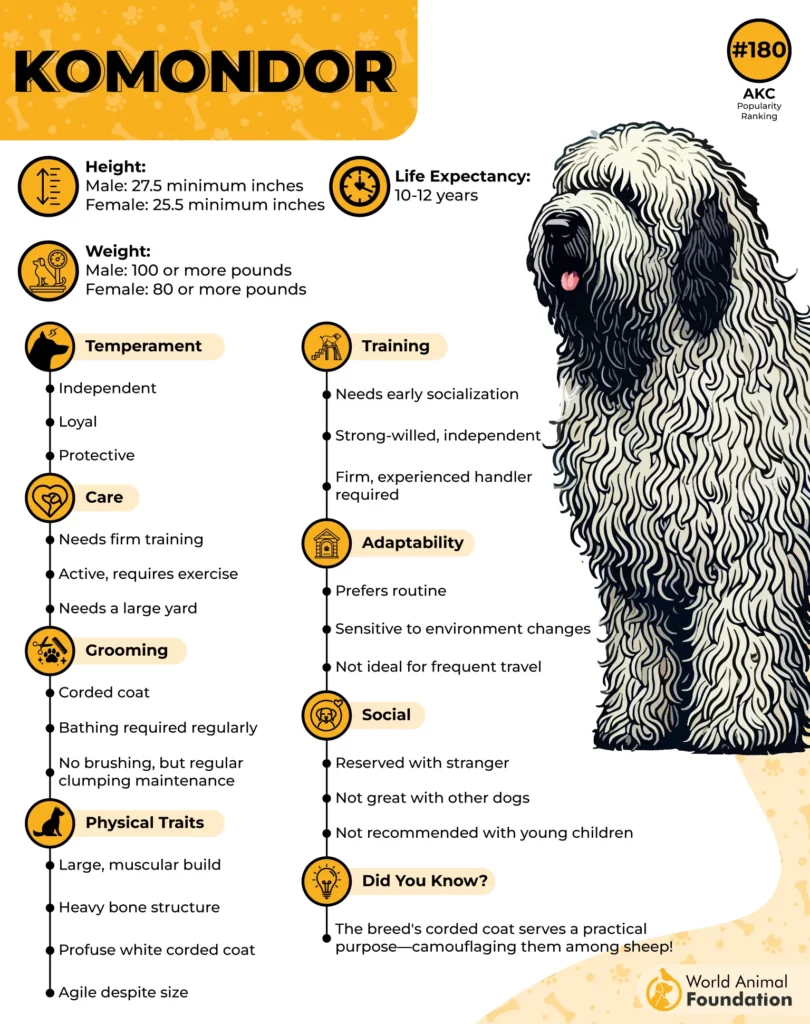
The AKC highlights the Tibetan Mastiff’s robust build, with males reaching 26 to 30 inches in height and weighing between 90 and 150 pounds. Females tend to be smaller but still carry substantial weight, generally between 70 and 120 pounds. This breed’s bulkier frame supports its role as a formidable guardian.
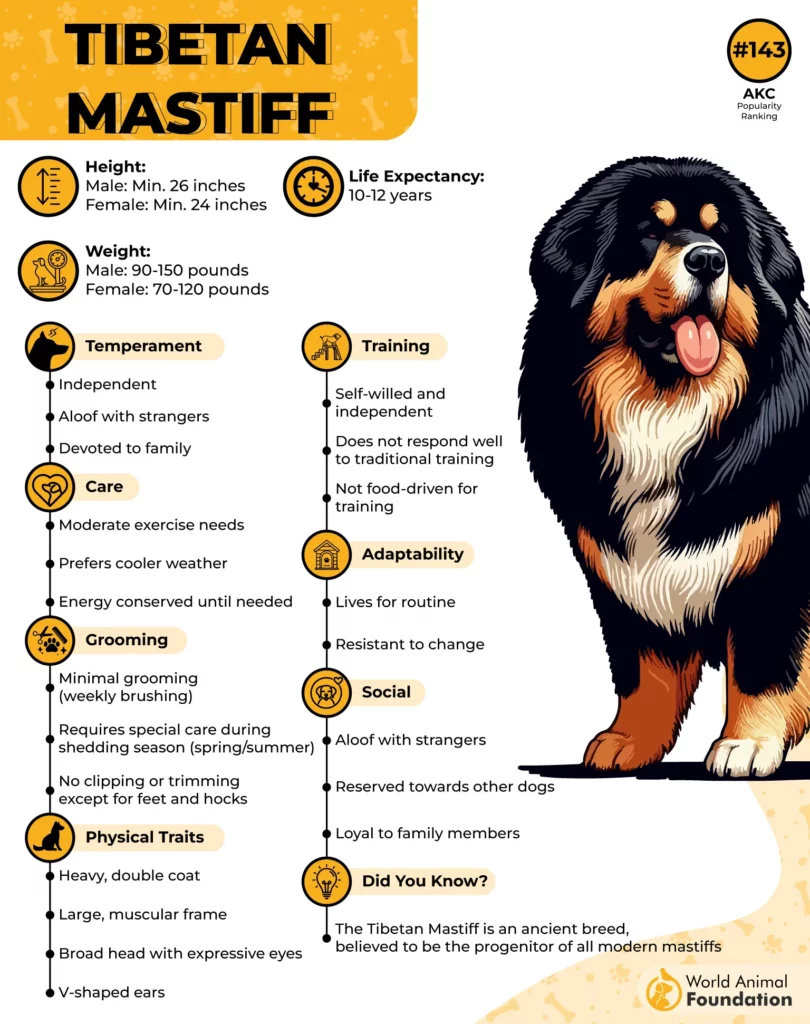
While both breeds demand ample space and care due to their size, the Komondor is generally lighter and more nimble compared to the heavier and more solid Tibetan Mastiff.
Intelligence and Trainability Differences
Both the Komondor and Tibetan Mastiff are intelligent dog breeds, yet their approach to learning and obedience varies significantly. The Komondor is known for its sharp instincts and strong work ethic, making it relatively easy to train for guarding tasks. According to PetMD, it benefits from consistent, firm training, though it can be independent and requires patient owners who understand its protective nature
The Tibetan Mastiff, meanwhile, is highly intelligent but displays a more stubborn and independent personality. As highlighted by VCA Hospitals, training requires extra effort, with early socialization and positive reinforcement being key to managing their strong-willed temperament. They often require extra effort and time to train effectively, as their protective instincts can sometimes lead to selective obedience.

Both breeds respond best to positive reinforcement and early socialization, making the owners’ role crucial in shaping their behavior.
Temperament and Personality Traits
The Komondor is a devoted guardian, naturally alert and protective of its home and family. This breed is generally calm with loved ones but can be wary of strangers, making early socialization vital. Its loyalty and watchful personality make it an excellent choice for owners seeking a strong protector.
On the other hand, the Tibetan Mastiff carries a noble and independent spirit. They are intelligent but possess a reserved, sometimes aloof demeanor. This breed is friendly with family members but can be cautious around other dogs and cats, demanding, patient, confident owners who can channel their instincts appropriately.

Both breeds have distinct personalities that require effort and understanding from their owners to nurture a balanced, friendly pet suited to home life.
Activity Levels and Playfulness
Komondors are not overly energetic dogs but do require regular activity to stay healthy and happy. They enjoy playtime that engages their guarding instincts, such as games involving alertness and quick responses. This breed thrives in environments where their natural watchfulness is put to good use, making play a purposeful effort rather than just casual fun.
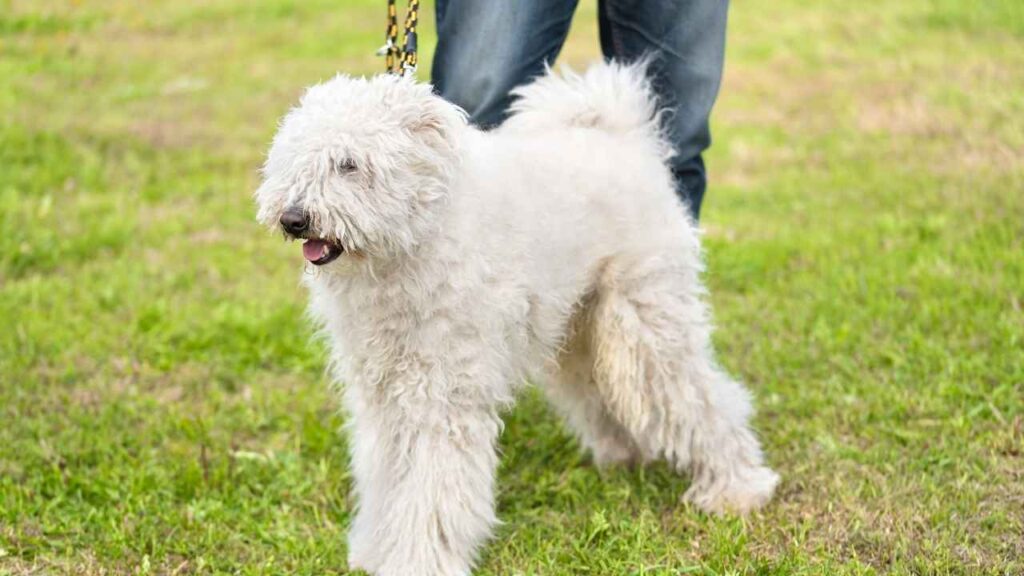
Tibetan Mastiffs, in contrast, display a more independent approach to activity. They are known for their endurance and stamina, but can be somewhat reserved during play. Tibetan Mastiffs prefer low to moderate activity levels and enjoy short bursts of play rather than extended sessions. Their playfulness is often selective, and they bond closely with owners who respect their unique personalities.
Both breeds, though different in their daily energy, benefit from consistent engagement to maintain their physical and mental health.
Energy, Endurance, and Daily Exercise Needs
Both Komondors and Tibetan Mastiffs have endurance suited for guarding large properties and livestock, reflecting their historical roles. The Komondor’s energy tends to be steady rather than high-strung, meaning they prefer moderate daily exercise that keeps them alert without exhausting their calm demeanor. Their unique corded coat also helps them withstand harsh weather during outdoor activity, making them excellent guardians in all seasons.
Tibetan Mastiffs, known for their endurance in mountainous terrain, possess a quiet strength that serves them well during extended periods of watchfulness. Their exercise needs are moderate, but they require enough mental stimulation to avoid boredom, which can lead to destructive behavior.
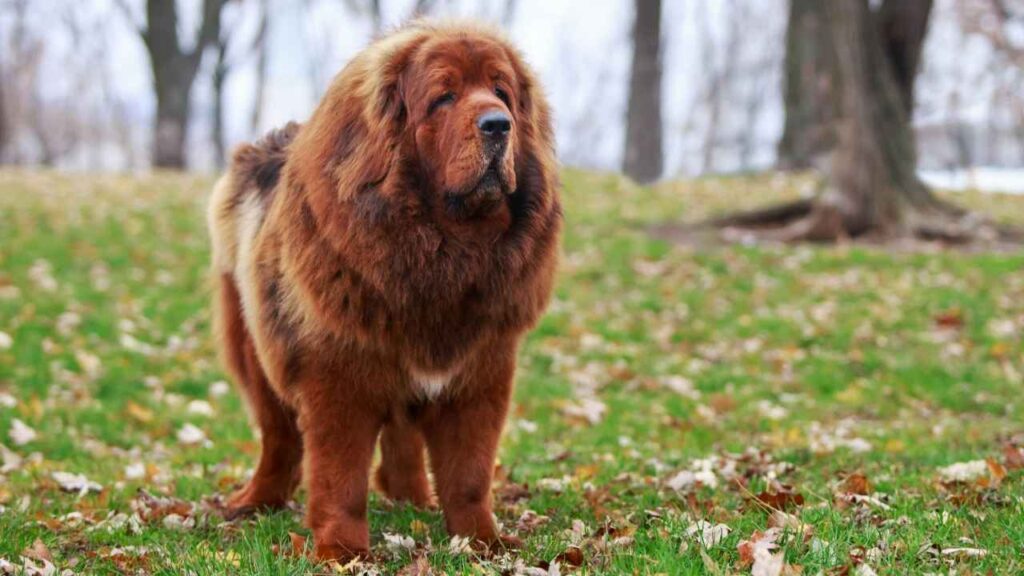
Both breeds generally do best with purposeful activity — it’s not just about physical exertion, but engaging their guarding instincts that makes exercise truly beneficial.
Bite Force and Jaw Structure Comparison
When it comes to bite strength, both breeds are formidable. The Komondor has a powerful jaw designed for protection, historically used to fend off predators threatening livestock. Their bite force is notable, with a strong grip that allows them to hold off threats without unnecessary aggression.
Similarly, Tibetan Mastiffs possess a robust jaw structure, evolved to protect flocks against large predators like wolves and even lions. Tibetan Mastiffs have a bite force that ranks among the highest in dog breeds, supporting their reputation as fearless protectors. Tibetan Mastiffs have one of the strongest bite forces among domestic dogs, enabling them to confront predators like leopards and wolves.

Despite their powerful jaws, both breeds show measured protective behavior and are generally gentle with family.
Health Issues and Lifespan
Generally, both Komondors and Tibetan Mastiffs are hardy breeds with lifespans averaging between 10 to 12 years. They can be prone to some breed-specific health concerns. Komondors sometimes face issues related to their heavy coats, such as skin infections if not groomed properly, and hip dysplasia can occasionally affect their mobility.
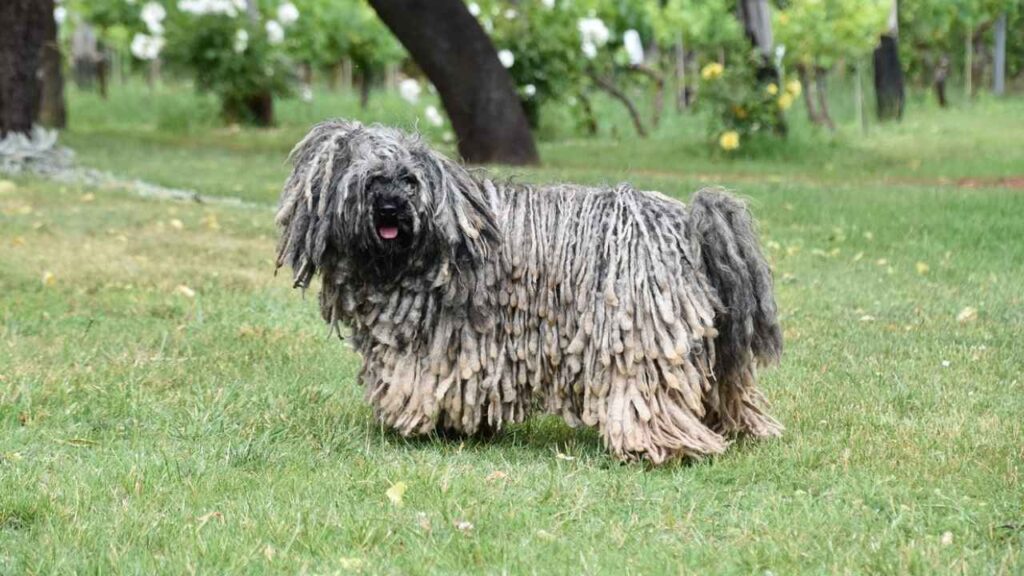
Tibetan Mastiffs, on the other hand, are known to develop hereditary conditions like hypothyroidism and autoimmune disorders, along with hip and elbow dysplasia. Despite these challenges, with proper veterinary care, nutrition, and regular exercise, both breeds can enjoy robust health and a fulfilling life.
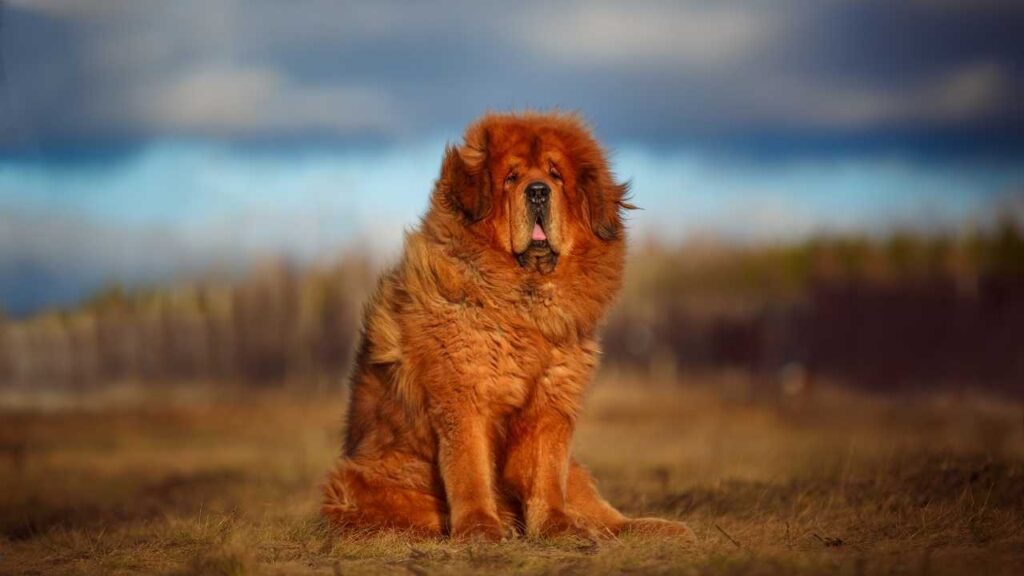
Both breeds benefit from mental stimulation like scent work or herding-related tasks to channel their guarding instincts and avoid boredom.
Conclusion
Choosing between these magnificent dog breeds isn’t always easy, but with a little effort and careful check, you can find the right fit for your home. Komondors stand out with their friendly yet watchful nature, offering steady energy and that unforgettable corded coat. Tibetan Mastiffs carry a quiet strength and endurance, balanced with loyalty that’s truly rare among dog breeds.
Both breeds are well worth the commitment for owners ready to invest the time and care they deserve. Unlike many other dogs, these breeds bring a unique blend of intelligence and protective instinct that deepens the bond every day.
If you want a dog that combines guarding ability with companionship, the Komondor Tibetan Mastiff group offers two remarkable choices, perfect for those who value purposeful, loyal pets.


